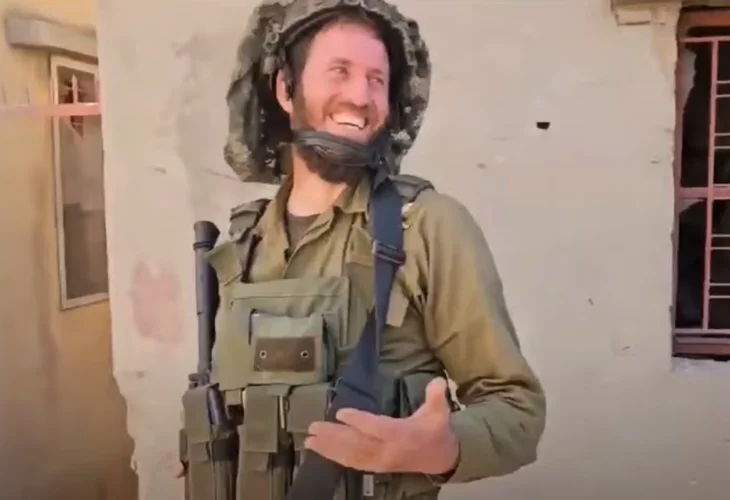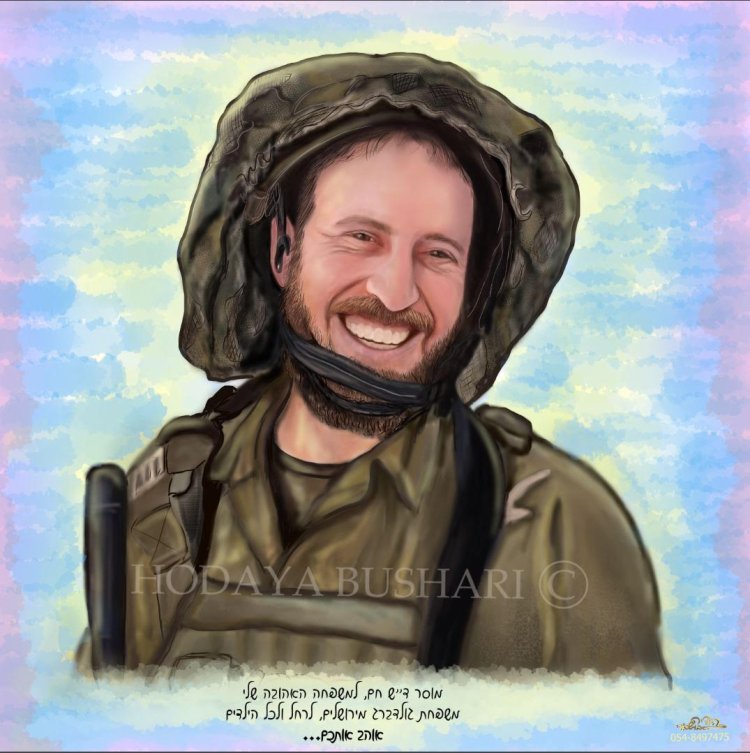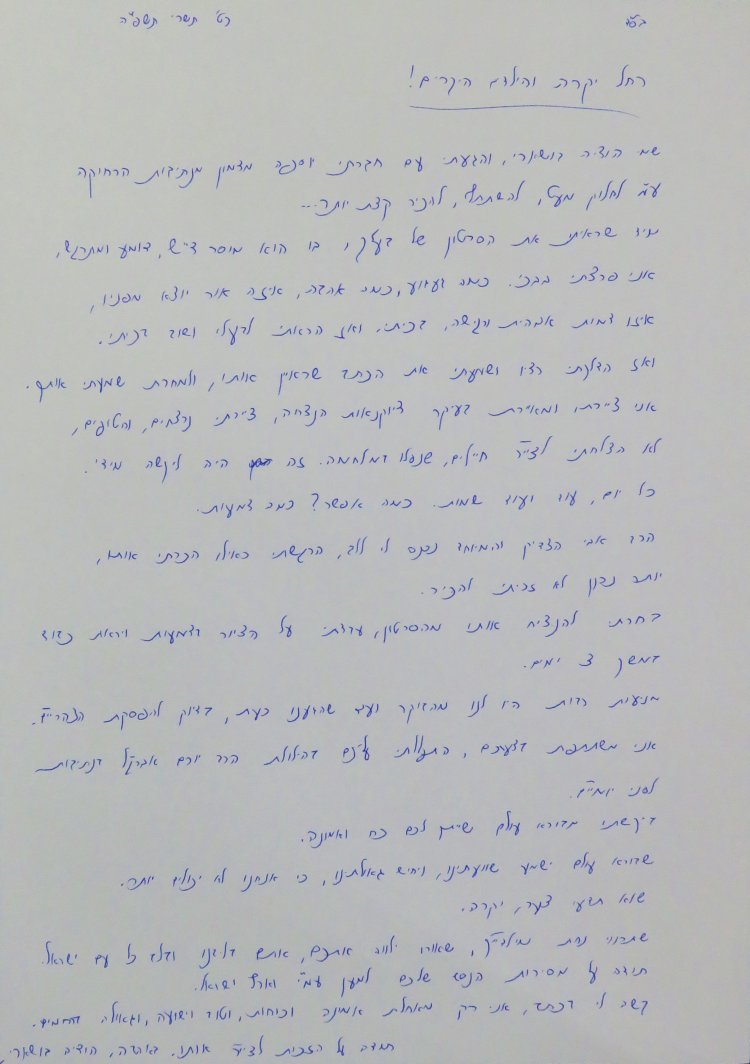"A Portrait of Memory: Honoring Rabbi Avi Goldberg's Legacy"
Artist Hodaya Bushari set out to paint Rabbi Avi Goldberg, who was tragically killed in Lebanon. She never anticipated the heartfelt phone call she would receive from his wife, Rachel.
 Rabbi Goldberg z"l
Rabbi Goldberg z"l"The Grief of October," was how the month of Tishrei 5785 was described, during which 87 people lost their lives in various incidents, including Rabbi Avi (Avraham Yosef) Goldberg, z"l, a military rabbi in Battalion 8207.
Rabbi Goldberg passed away on Shabbat, and the next day a video was released showing him being interviewed by a 'Kan' news reporter, where he poignantly says: "Send regards to the Goldberg family in Jerusalem - to Rachel and all the children." These words became a lasting memory from a father they would no longer see.
Like many others in Israel, artist Hodaya Bushari was moved to tears by the video of Rabbi Goldberg, whom she saw in Lebanon dressed in military gear, a glimmer in his eyes. "I saw pure longing, love, concern, and dedication, the tears brimming in his eyes, and I broke down crying," Hodaya shares. "It was deeply painful to realize that only two weeks after the video was taken, Rabbi Avi Goldberg, z"l, was killed in Lebanon."
Since the start of the war, Hodaya had taken on the task of painting fallen soldiers, creating lasting memories for the families.
This time, the task was more challenging. "Usually, I work with high-quality photos of the subject, but this time I didn't have any," she explains. "Nor did I have family members to guide and correct me." During painting, she listened to a radio reporter who had interviewed Rabbi Goldberg, reflecting on how profound it was to be part of such a significant memory for the family.


"I continued painting the next day, once again thinking of the Goldberg family as Rachel, his dear widow, spoke on the radio about her husband—a remarkable man with an unforgettable smile. They used to sing and play music for Holocaust survivors on their birthdays, even adopting some of them as honorary grandparents," she recalls with tears, "I kept telling myself: "What an incredible man I have the honor to paint. Why did my heart choose to paint him..."
With the painting finally completed, I traveled with a friend to Jerusalem to present it to Rachel.
"The journey was long, packed with traffic, and eventually the navigation app couldn't find the street. We parked as directed and walked about a street and a half on foot, arriving at a crowded mourning tent full of grieving people.
It was already half-past one. We needed to leave soon.
I waited patiently as a newly widowed mourner comforted the family, and when she finished and I tried to approach, a family member announced on loudspeaker that the family was taking a lunch break.
I wanted to reach Rachel just to give her the picture, but since it wasn't possible, I asked to pass it through Rabbi Avi's brother. The brother was deeply moved, saying it was astonishingly accurate.
Before heading back to the car, I thought: "I'll write a message to Rachel and the children since I can't meet them." I returned to the painting and wrote what I wanted to tell them in person on its back.
We then hurried back to the car, embarking on the long journey ahead, when suddenly my phone rang. An unfamiliar number. I answer, and it's dear Rachel on the line.
"With incredible sensitivity to my gesture, she calls to thank me... she shares how comforting the painting is—the eyes and high forehead captured perfectly." I comforted her with a few words, choking back tears.
"So here it is," Hodaya concludes, "I share my painting here, hoping it will connect more people to this extraordinary man that Israel recently lost. May his memory be a blessing."

